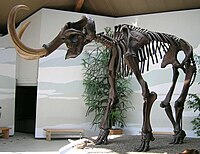
Photo from wikipedia
The use of indirect dietary markers, including stable isotopes, has immensely improved our knowledge of seabird trophic ecology throughout their annual cycle. Important aspects include differences in trophic niche between… Click to show full abstract
The use of indirect dietary markers, including stable isotopes, has immensely improved our knowledge of seabird trophic ecology throughout their annual cycle. Important aspects include differences in trophic niche between adults and chicks at the intra- and inter-specific levels and tissue-dependent differentiation in chicks. Using stable isotopic niche as a proxy for trophic ecology, we investigated how three closely related albatross species co-exist in the sub-Antarctic Prince Edward Islands. The effects of age, sex, tissue, and species on the isotopic niche were observed for Grey-headed Thalassarche chrysostoma, Sooty Phoebetria fusca, and Light-mantled Phoebetria palpebrata Albatrosses breeding on Marion Island. At the end of chick-rearing, carbon and nitrogen stable isotope values differed according to age, tissue, and species but not the sex of either adults or chicks. A complex pattern was revealed as the three species exhibited contrasting results. For example, values for δ13C or δ15N of chick blood could be depleted, enriched or similar relative to that of adults, depending on species. Stable isotope differences between blood and feathers likely reflect differences in their amino acid composition, while adult/chick differences will relate to their different physiological needs and diet. The results indicate that co-existence of the three species on the island is facilitated through resource partitioning among species in terms of foraging areas and in the trophic levels at which adults feed for themselves and their chicks. This work brings new insights into the effect of intrinsic factors on the foraging ecology of marine top predators.
Journal Title: Polar Biology
Year Published: 2018
Link to full text (if available)
Share on Social Media: Sign Up to like & get
recommendations!